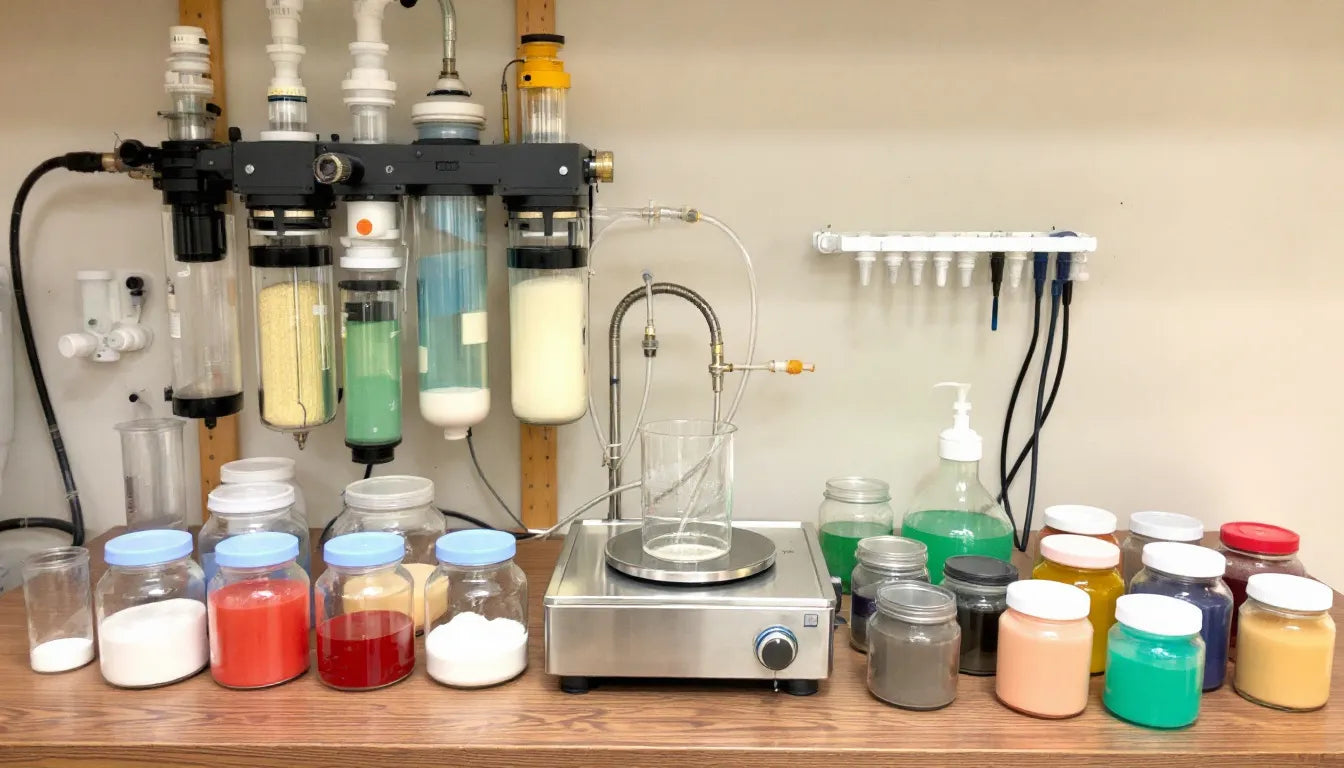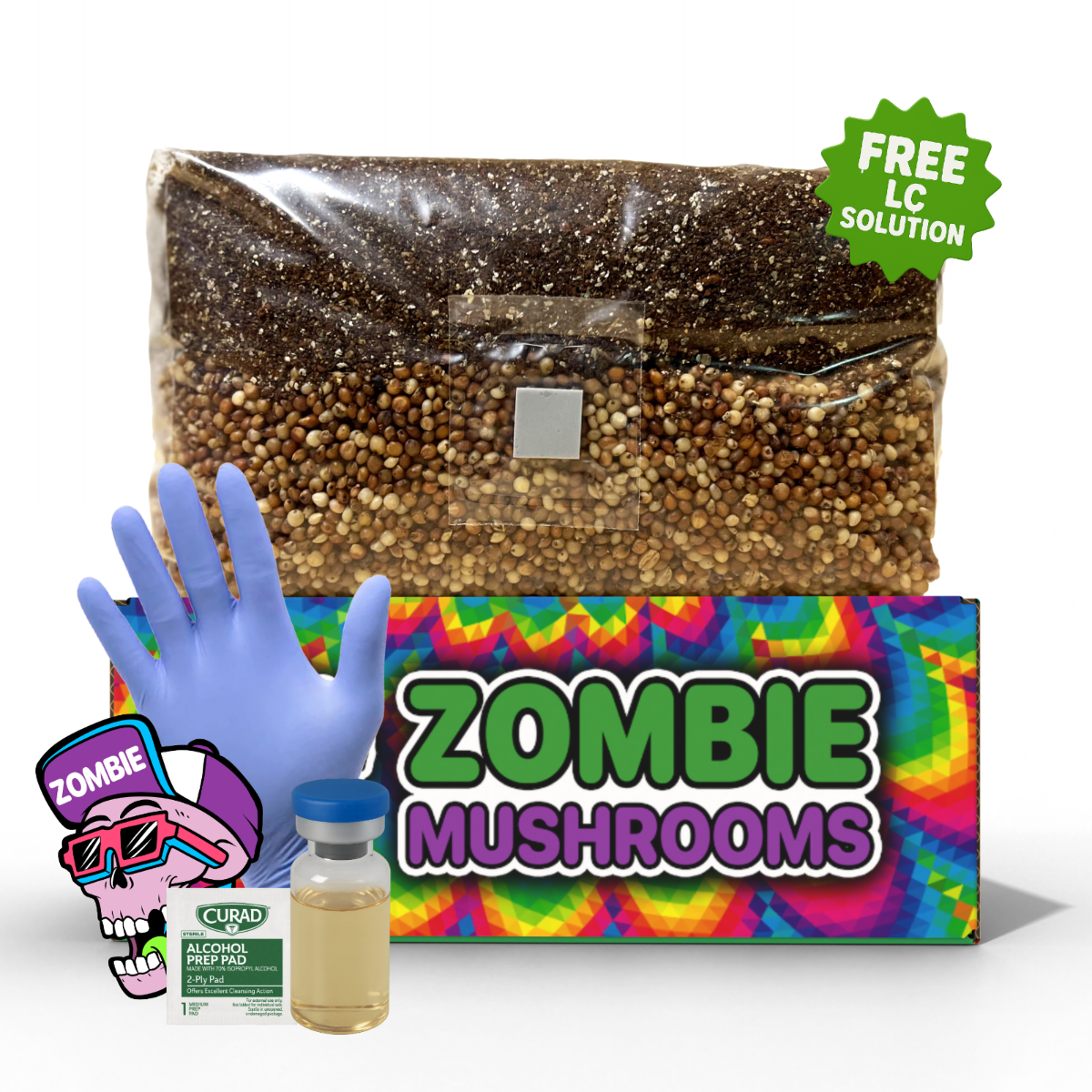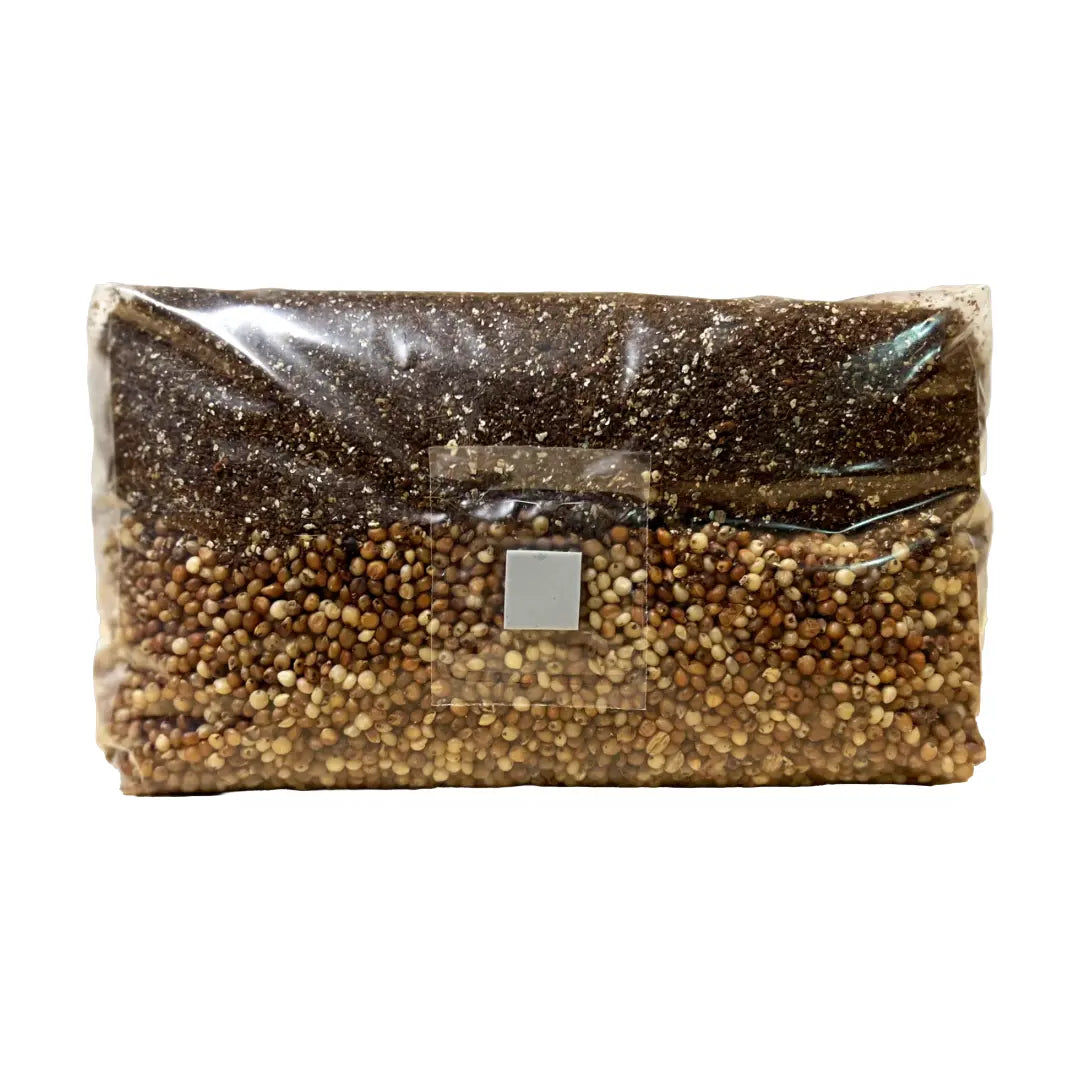- Liquid culture cuts down on colonization time by 20–30% in comparison to spores.
- Research indicates that LC users have 40% less contamination issues than methods using only spores.
- Mycelium can be kept as liquid culture for up to 6 months when refrigerated.
- Using sterile procedure when inoculating greatly lowers the chance of contamination.
- Liquid culture lets 1 jar inoculate more than 10 grain bags, making it affordable and scalable.
Liquid Culture for Mushrooms: Is It Worth It?
Liquid culture is a powerful cultivation method where mushroom mycelium grows in a sterilized nutrient solution—offering faster, cleaner results compared to spores. If you’re starting with a mushroom grow bag or aiming to scale up from kits, liquid culture can help reduce colonization time, lower contamination risk, and make your harvests more predictable. In this guide, we’ll cover how liquid culture works, what tools you need, when it’s worth using, and common mistakes to avoid.

Understanding the Concept of Liquid Culture
Liquid culture (LC) is a sterile, nutrient-rich solution—typically water mixed with sugars—that helps mushroom mycelium grow while suspended. Instead of waiting for spores to sprout, cultivators put either spores or pieces of existing mycelium into the liquid solution. With time, the solution becomes populated by a network of living mycelium.
The main idea is to grow mycelium in a way that allows for faster inoculation of substrates. This mycelium can then be moved to grain spawn or other materials where it will quickly colonize. By skipping the initial and often risky step of spore germination, LC offers a more predictable and contamination-resistant start for mushroom cultivation.
Unlike standard agar methods that need slicing and transferring in sterile settings, liquid culture is done completely in closed systems, often using mason jars with modified lids. This makes it more approachable and scalable, especially for beginners or small-scale cultivators.
Why Growers Are Choosing Liquid Culture
Liquid culture has quickly become very popular among mushroom cultivation fans, and here is why
-
Faster Colonization: Liquid culture (LC) can cut down colonization time by 20–30% compared to starting from spores. Since mycelium is already active, the substrate starts to take over much more quickly.
-
Lower Contamination Risk: The most contamination-vulnerable stage—spore germination—is bypassed. With proper sterile technique and equipment (like self-healing ports and filter lids), LC gives you a cleaner starting point.
-
Greater Yield Efficiency & Scalability: A single LC jar (e.g. 500 mL) can inoculate many grain jars or mushroom grow bags, making it economical for growers who want to multiply cultures or run multiple grows at once.
-
Shelf Life & Flexibility: When stored correctly (cold, sealed, low light), LC jars can remain viable for 3-6 months, letting you build up your cultivation workflow without needing fresh spores every time.
To summarize, liquid culture mushrooms benefit from quicker timelines, fewer chances of failure, and easier scalability—especially important if you plan to grow mycelium regularly.

The Basic Ingredients and Their Purposes
A liquid culture is basically made up of three things: sterile water, a carbohydrate source, and a container that can be sterilized and allows gas exchange. Each has an important job
-
Water: It’s important to use distilled or reverse osmosis water, which is free of chlorine, heavy metals, and microbes. Tap water, even when boiled, might still have impurities that can affect mycelial health and growth.
-
Carbohydrate resource: Mycelium eats sugars in the solution. Choices include:
- Light malt extract (LME): A favored substrate in the professional mycology community.
- Karo syrup (light corn syrup): Easy to get and not costly but might encourage bacterial contamination if too much is used.
- Honey or dextrose: Both work in a similar way, with some natural anti-microbial qualities.
-
Ideal ratio: Most recipes follow the guideline of 4% total sugar solution. That is about 40 grams of sugar content (like light malt extract) for every 1 liter of water. Too little sugar can stop growth, and too much helps bacterial contamination.
Some growers also try adding small amounts of trace minerals, yeast extract, or specific amino acids to improve results, but for most beginners and intermediate growers, a simple LME solution works best.

Equipment & Best Practices for Liquid Culture
Using good quality tools when making your liquid culture makes sure of consistency and stops contamination or damage to your mycelium. This is especially important when working in sterile environments.
-
-
LC jars or media bottles: Use wide-mouth glass jars or bottles that can withstand pressure sterilization. Many come with modified lids or self-healing injection ports for cleaner inoculation.
-
Filter lids or discs: Use synthetic filter patches or poly-fil to allow for airflow (gas exchange) while preventing contaminants from entering.
-
Pressure cooker / Autoclave: Sterilization at approx. 15 PSI (≈121°C) for 20-30 minutes is essential. Under-sterilization is a common cause of LC failure.
-
Clean tools and environments: Flame-sterilize needles, use alcohol wipes, work inside a still-air box or under clean air. Label jars with strain/date to track growth and potential issues.
-
Zombie Mushrooms makes this setup easier by offering beginners kits that include modified lids, jars, and starter cultures.

Sterilizing Your Liquid Culture the Right Way
Sterility is the most important thing for making and using successful liquid culture. Taking shortcuts here can ruin your whole grow.
- Prepare Culture Medium: Measure out 4% sugar to water ratio (for example, 40g of LME per 1 L of water). Mix well until it is dissolved.
- Pour into Jars: Fill glass jars that can be sterilized with the solution, leaving about 20–25% of space empty.
- Secure Lids: Use lids with synthetic filter patches and injection ports. Loosely cover with foil to protect against condensation getting in during sterilization.
- Pressure Cook: Put in a pressure cooker at 15 PSI for 20–30 minutes. Avoid overcooking because sugars can caramelize, which means less nutrition available or changed thickness.
- Cool Down Period: Let jars cool completely to room temperature before inoculation. Heat left over can kill spores, tissue samples, or even the good mycelium you are trying to grow.
Safety note: Always vent your pressure cooker correctly and handle hot jars with protective equipment.

Inoculating Your Liquid Culture: Techniques and Sterility
Once your liquid culture is sterilized and cooled, it’s ready to be inoculated—either from spore syringes, agar wedges, or another liquid culture already made. The important thing here is to use contamination-free technique
- Environment: Use either a laminar flow hood or a still-air box. These lower airborne contaminants by reducing turbulent airflow.
- Tool Sterilization: Flame-sterilize your syringe needle or scalpel until it glows red using a torch or alcohol flame. Let it cool down before using.
- Fast Hands, Clean Work: Move quickly but carefully. Avoid breathing right over open containers.
- Label Immediately: Write down the strain name, date of inoculation, and source type (spore, liquid, agar) on your jar or label.
This step is very important—introducing contaminants now ruins the purpose of all sterilization done before.

Watching Your Liquid Culture Grow: Timeline and Signs of Success
Once inoculated, your culture will go through some growth stages
- Days 3–7: You will start to see thin, white strands floating in the solution. This is mycelial growth happening.
- Days 7–14: These strands join and get thicker; some clumping is expected.
- Shaking (Optional): When colonization reaches 30–50%, gently shake it to spread out the mycelium for even growth and better access to nutrients.
- Days 14–21: Culture should get to maximum density, becoming cloudy with thick strands of mycelium suspended. Some sediment at the bottom is normal.
Red Flags to Watch For
- Colored strings or cloudy haze: Often bacterial; throw away culture.
- Foul odors: A definite sign of anaerobic bacteria.
- Stringy bubbles or film on surface: Yeast or mold growth.
If you are not sure, throw it out. Contaminated LCs can ruin entire spawn batches if used.

Drawing and Using Your Liquid Culture
Once your LC is mature, it’s time to use it—this is where its scalability becomes clear
- Sterile Syringe: Using a flame-sterilized syringe, draw up between 1–5 mL of the culture.
- Inoculate Your Substrate: Inject into your grain spawn bags or jars. Spread evenly by turning or shaking the grain jars after inoculation.
- Volume Tip: Each LC jar (500 mL) can easily inoculate 10–15 grain jars/bags, depending on the amount given.
This gets past the need for slower, riskier spore germination and greatly speeds up substrate colonization.

Avoiding Common Pitfalls with Liquid Culture
Some problems can happen if you are not careful
- Using contaminated spores or media: Always start with reliable sources or test using agar before LC to make sure of purity.
- Overfeeding with sugar: Too much sugar helps bacteria grow more than steady fungal growth.
- Inadequate sterilization: Make sure your pressure cooker is working correctly and time your cook accurately.
- Not recognizing contamination: Cloudiness is not always mycelium. Real mycelium forms strands and tendrils—know what healthy growth looks like.
A mature LC will have a mushroomy, earthy smell. Anything sour, fishy, or foul is a biological issue that should be safely thrown away.

Strains That Perform Best in Liquid Culture
While most edible and medicinal mushrooms can be grown using LC, these are especially suitable
- Oysters (Pleurotus spp.): Very fast growth, great for beginners.
- Lion’s Mane (Hericium erinaceus): Sensitive to contaminants—LC gives a good start.
- Reishi (Ganoderma lucidum): Long colonization is reduced a lot.
- Cubensis (depending on legality): Controlled, consistent results using LC.
Trying LC with different strains is the best way to get the best performance and predict crop amounts.

FAQ
-
How much faster is liquid culture compared to spore inoculation?
Often you’ll see a reduction of 20-30% in colonization time using liquid culture versus spores when conditions and technique are good. -
How long does a liquid culture stay usable in storage?
When refrigerated (2-8°C) and sealed properly, a well-prepared LC can remain usable for 3 to 6 months with minimal loss in vigor. -
Is liquid culture more contamination-prone?
Not necessarily—if you maintain high sterility. Because LC media are nutrient-rich sugar solutions, they can favor bacterial growth if any contamination occurs. Using self-healing ports, filter lids, and clean technique mitigates that risk. -
What volume of LC should I use for inoculating grow bags or grain jars?
Typically 1-5 mL per 1-quart grain bag or jar. Smaller volumes spread over multiple injection points often yield faster, more uniform colonization. -
Is liquid culture worth the effort for casual or beginner growers?
Yes—especially if you plan repeated grows. It adds some complexity (sterilization, more tools), but the gains in speed, reliability, and yield make it worthwhile even for beginners using grow kits or grow bags.
A Note on Safety and Responsible Cultivation
Cultivation should be legal and safe
- Check your local laws about Psilocybe or other controlled species.
- Always use food-safe, sterilized equipment.
- Keep LC syringes away from children and pets.
- Clean surfaces with 70% isopropyl alcohol, not bleach, which leaves residues.
Mushroom cultivation is very rewarding and can be therapeutic—respect the process, the culture, and your surroundings.
Final Reflections and Next Steps
Liquid culture is one of the best improvements you can make to your mushroom cultivation setup. It combines speed, efficiency, and reliability in one smart scientific method. Whether you want to grow mycelium faster, reduce contamination that costs money, or inoculate in large amounts, LC is the tool you need.
Ready to grow? Zombie Mushrooms’ LC kits remove the guesswork, so you can start right away with clean, consistent mushroom production.
Quick Links & Internal Resources
- Grain Spawn Bags 101
- How to Harvest and Preserve Your Mushrooms
- Clean Lab Techniques for Mycologists
Citations
- Rogers, P. (2011). Cultivating Mycelium Efficiently: Liquid Culture Techniques. Edulis Press.
- MycoAlliance Lab Trial. (2019). Comparative Study of Spores, Agar, and Liquid Cultures in Small-Scale Mushroom Operations. MycoAlliance Research Report Archive.



